SpringBoot2----Web模块的基本注解
Posted 大忽悠爱忽悠
tags:
篇首语:本文由小常识网(cha138.com)小编为大家整理,主要介绍了SpringBoot2----Web模块的基本注解相关的知识,希望对你有一定的参考价值。
Web模块的基本注解
1.1、注解:
@PathVariable、@RequestHeader、@ModelAttribute、@RequestParam、@MatrixVariable、@CookieValue、@RequestBody

@ResponseBody
@ResponseBody,一般是使用在单独的方法上的,需要哪个方法返回json数据格式,就在哪个方法上使用,具有针对性。
@RestController
@RestController,一般是使用在类上的,它表示的意思其实就是结合了@Controller和@ResponseBody两个注解
如果哪个类下的所有方法需要返回json数据格式的,就在哪个类上使用该注解,具有统一性;需要注意的是,使用了@RestController注解之后,其本质相当于在该类的所有方法上都统一使用了@ResponseBody注解,所以该类下的所有方法都会返回json数据格式,输出在页面上,而不会再返回视图。
@PathVariable
@PathVariable(“key”): 传入了对应的key,只拿一个,不传,默认拿所有
@RestController
public class myController
{
@RequestMapping("/hello/{id}/name/{name}")//占位符
//获取路径上的占位符
public Map<String,Object> hello(@PathVariable("id")Integer id
//这里如果放置一个map,spring会将所用的路径参数放入map中
,@PathVariable("name")String name,@PathVariable Map<String,String> map)
{
Map<String,Object> m=new HashMap<>();
m.put("id",id);
m.put("name",name);
m.put("map",map);
return m;
}
}
这里Map的类型必须是Map<String,String>

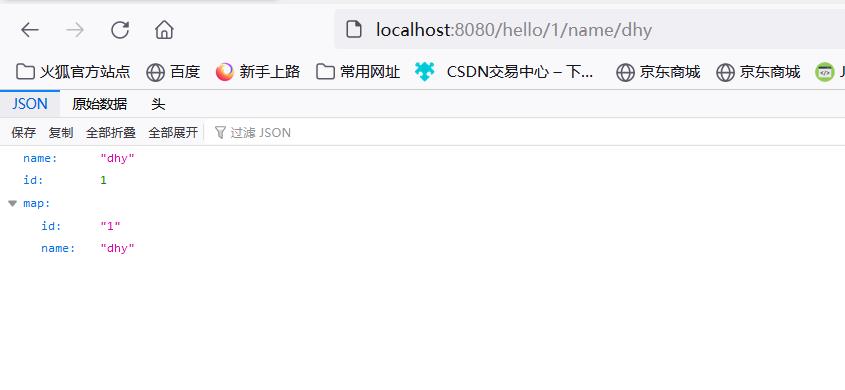
@RequestHeader

@RestController
public class myController
{
@RequestMapping("/hello")
public Map<String,Object> hello(
//带key,拿一个,否则拿所有
@RequestHeader("user-agent") String header,
@RequestHeader Map<String,String> map
)
{
Map<String,Object> m=new HashMap<>();
m.put("header",header);
m.put("map",map);
return m;
}
}
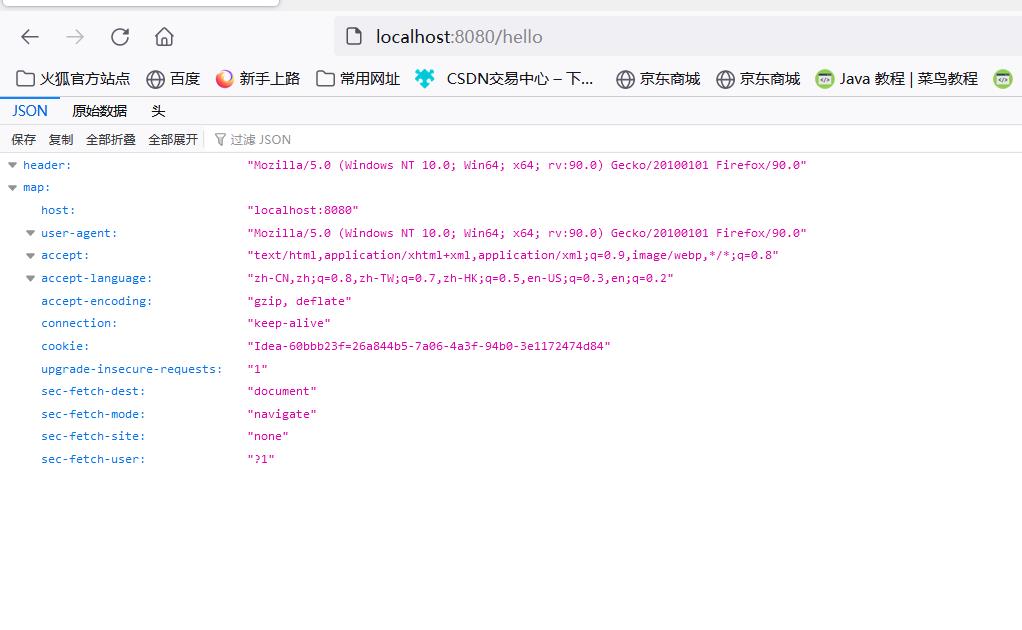
@RequestParam
@RestController
public class myController
{
@RequestMapping("/hello")
public Map<String,Object> hello(@RequestParam("age")Integer age,
@RequestParam("hobby") List<String> list,
@RequestParam Map<String,String> map)
{
Map<String,Object> m=new HashMap<>();
m.put("age",age);
m.put("hobby",list);
m.put("map",map);
return m;
}
}
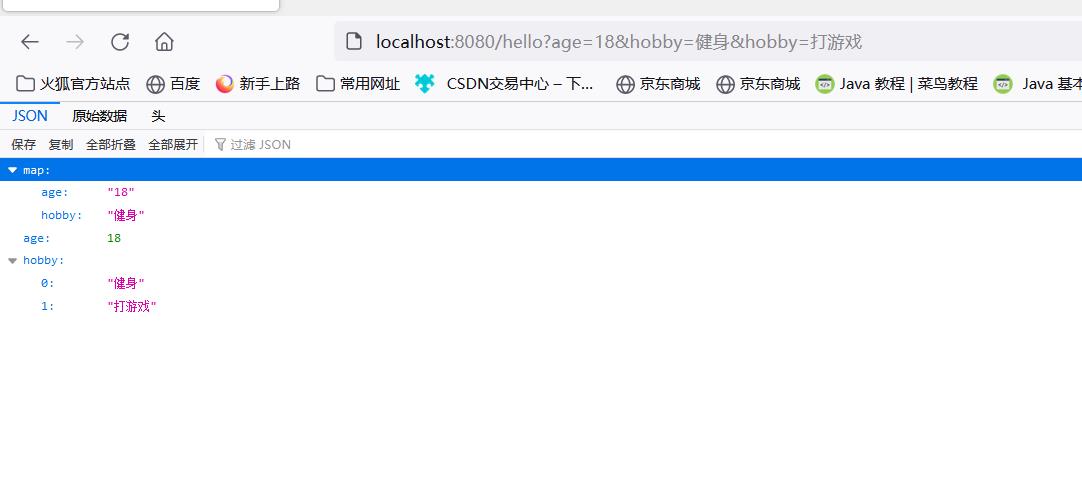
@CookieValue
获取指定cookie的值
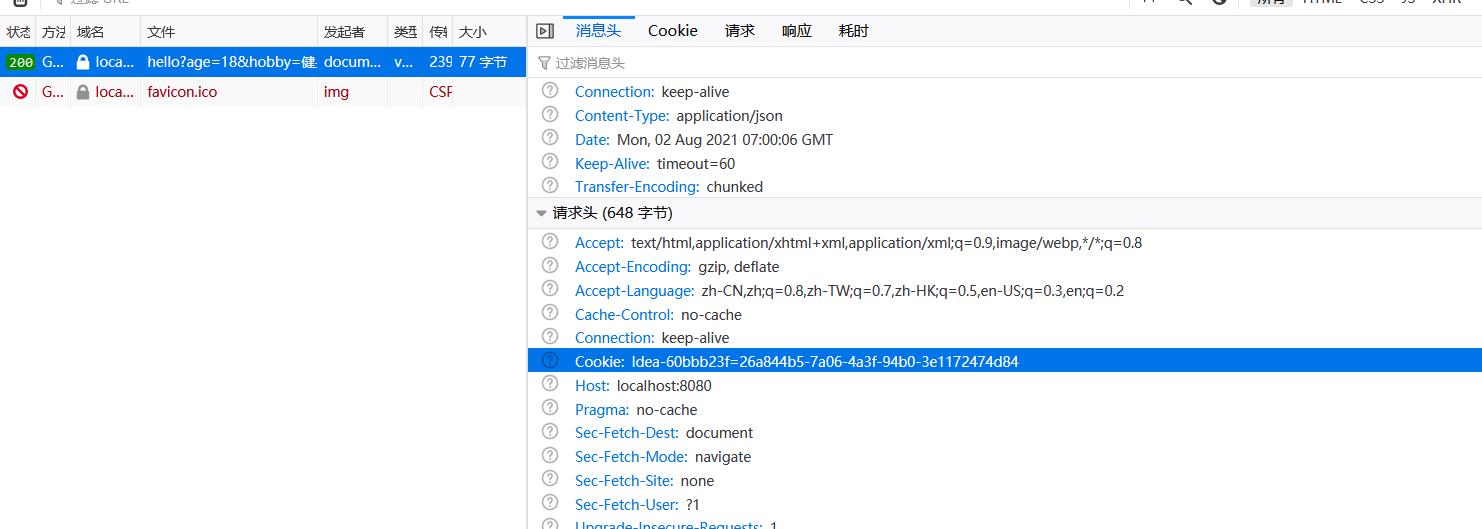
@RestController
public class myController
{
@RequestMapping("/hello")
public Map<String,Object> hello(@CookieValue("Idea-60bbb23f")String value)
{
Map<String,Object> m=new HashMap<>();
m.put("value",value);
return m;
}
}

如果参数被声明为一个cookie类型,那么就可以获取到该cookie的所有信息:

@RestController
public class myController
{
@RequestMapping("/hello")
public Map<String,Object> hello(@CookieValue("Idea-60bbb23f") Cookie value)
{
Map<String,Object> m=new HashMap<>();
m.put("value",value);
return m;
}
}

@RequestBody
获取到请求体中的数据封装到指定的对象中,只有Post方式才有请求体
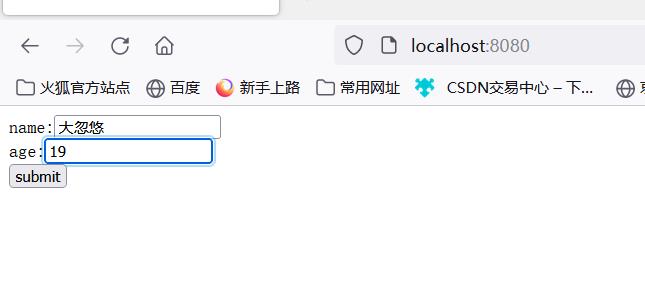
@RestController
public class myController
{
@RequestMapping("/hello")
public Map<String,Object> hello(@RequestBody String info)
{
Map<String,Object> m=new HashMap<>();
m.put("people",info);
return m;
}
}

@RequestAttribute
取出当前请求域中的值
@Controller
public class myController
{
@RequestMapping("/hello")
public String hello(HttpServletRequest request)
{
request.setAttribute("name","大忽悠");
request.setAttribute("age","18");
//这里没有模板引擎的话,无法完成页面跳转
return "forward:success";//转发到 /success请求
}
@ResponseBody
@RequestMapping("/success")
public Map<String,Object> show(
@RequestAttribute("name")String name,
//这里是转发,因此是一次请求,所以request对象是同一个
HttpServletRequest request)
{
String rn= (String) request.getAttribute("age");
Map<String,Object> map=new HashMap<>();
map.put("name",name);
map.put("age",rn);
return map;
}
}
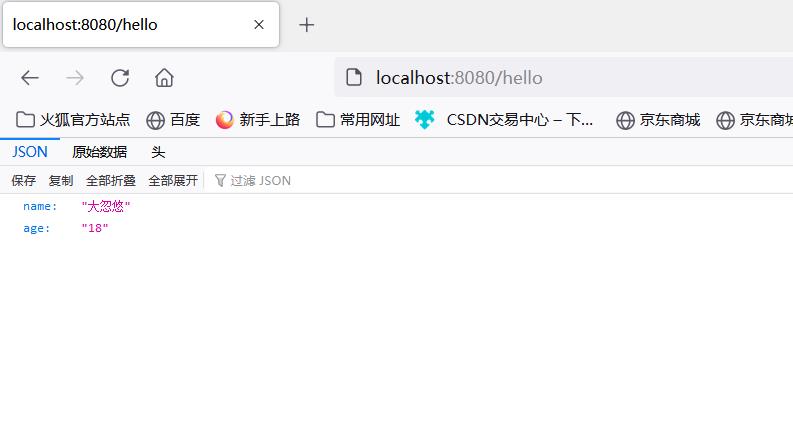
注意: 如果不引入模板引擎,那么就无法完成下面页面渲染,跳转到指定页面等功能
@MatrixVariable—矩阵变量

小应用: cookie禁用后,如何获取Jsessionid ?
session.get(a)<-----服务器按照jsessionid得到session对象<-----cookie中保存了session对象的唯一标识id<-----每次发请求携带该cookie
- url重写: /abc;jsessionid=xxxx 把cookie中保存的jsessionid的值通过矩阵变量的方式传递,和请求参数区分开来
手动开启矩阵变量的功能
我们可以使用@Configuration + WebMvcConfigurer 自定义配置,覆盖默认配置

对应配置类实现WebMvcConfigurer接口完成对springmvc默认配置的修改
WebMvcConfigurer是一个接口。里面的方法都是default的方法,可以有选择的实现。方法的返回值都是webmvc需要配置的Bean。
所以可以实现这个接口,配合@Configuration注解自定义mvc组件。
@Configuration//表明这是一个配置类
public class WebConfig implements WebMvcConfigurer
{
@Override
public void configurePathMatch(PathMatchConfigurer configurer) {
UrlPathHelper urlPathHelper=new UrlPathHelper();
//不移除分号后面的内容,矩阵变量功能就可以生效
urlPathHelper.setRemoveSemicolonContent(false);
configurer.setUrlPathHelper(urlPathHelper);
}
}
直接将对应组件注入容器中
@Configuration//表明这是一个配置类
public class WebConfig
{
@Bean
public WebMvcConfigurer webMvcConfigure()
{
return new WebMvcConfigurer() {
@Override
public void configurePathMatch(PathMatchConfigurer configurer) {
UrlPathHelper urlPathHelper=new UrlPathHelper();
//不移除分号后面的内容,矩阵变量功能就可以生效
urlPathHelper.setRemoveSemicolonContent(false);
configurer.setUrlPathHelper(urlPathHelper);
}
};
}
}
注意事项1:
@RestController
public class myController
{
//1、语法: 请求路径:/cars/sell;low=34;brand=byd,audi,yd ====>浏览器请求路径的写法
//2、SpringBoot默认是禁用了矩阵变量的功能
// 手动开启:原理。对于路径的处理。UrlPathHelper进行解析。
// removeSemicolonContent(移除分号内容,忽略了分号后面所有内容)支持矩阵变量的
//3、矩阵变量必须有url路径变量才能被解析
@GetMapping("/cars/{path}")
public Map carsSell(@MatrixVariable("low") Integer low,
@MatrixVariable("brand") List<String> brand,
@PathVariable("path") String path) {
Map<String, Object> map = new HashMap<>();
map.put("low", low);
map.put("brand", brand);
map.put("path", path);
return map;
}
}
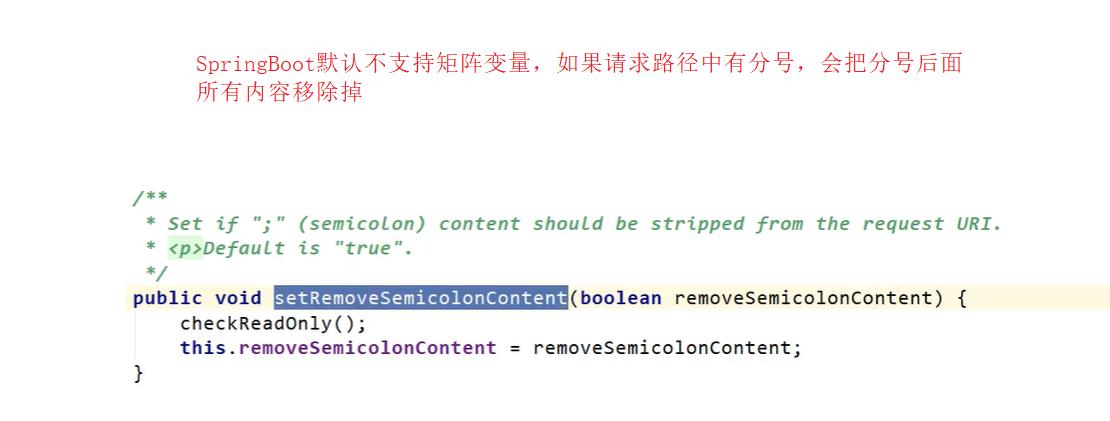
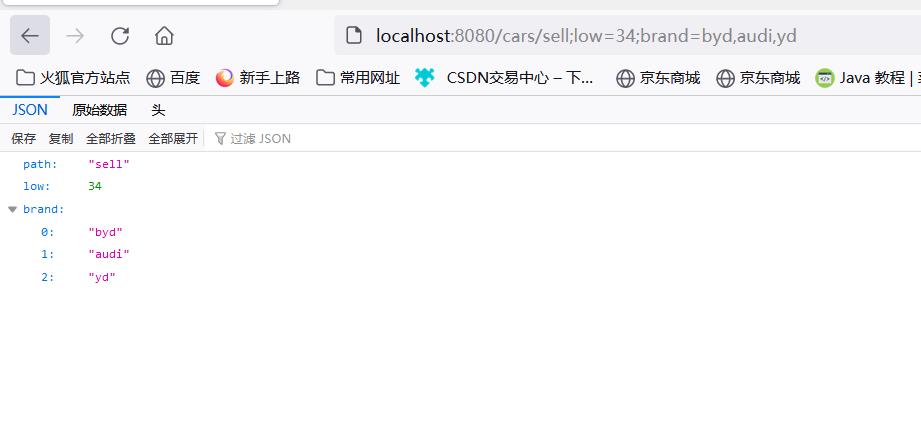
注意事项2:矩阵变量遇到相同的名字进行获取时,需要通过路径变量来进行区分,即占位符
@RestController
public class myController
{
// /boss/1;age=20/2;age=10
@GetMapping("/boss/{bossId}/{empId}")
//通过路径变量,占位符进行相同名字的区分
public Map boss(@MatrixVariable(value = "age",pathVar = "bossId") Integer bossAge,
@MatrixVariable(value = "age",pathVar = "empId") Integer empAge){
Map<String,Object> map = new HashMap<>();
map.put("bossAge",bossAge);
map.put("empAge",empAge);
return map;
}
}
以上是关于SpringBoot2----Web模块的基本注解的主要内容,如果未能解决你的问题,请参考以下文章